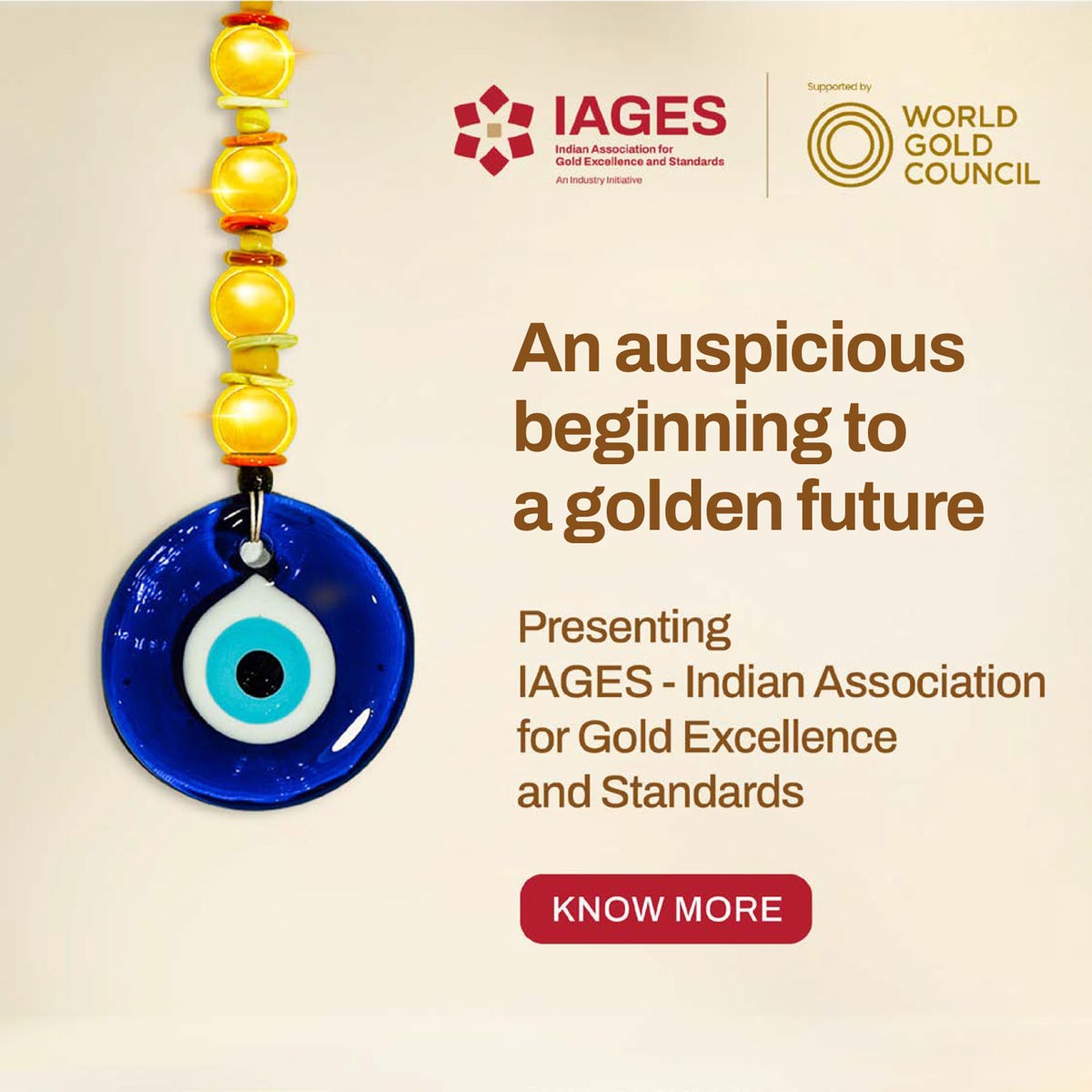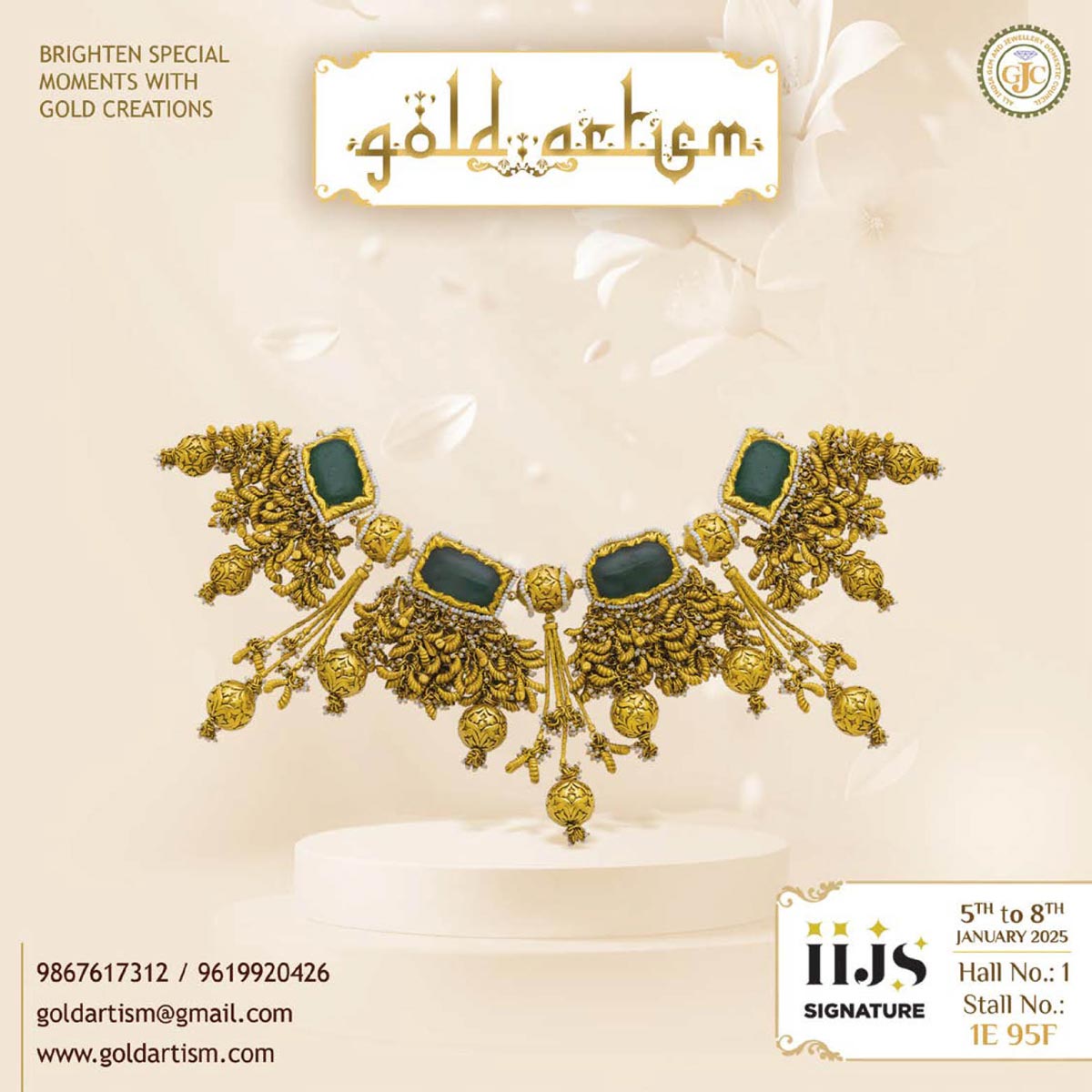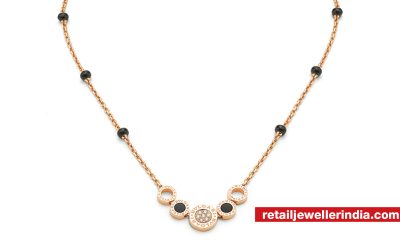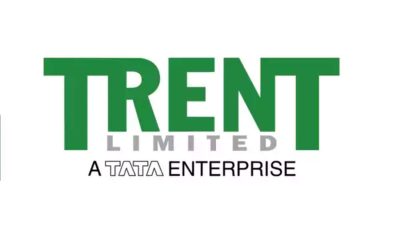Cover Feature
Things I stopped doing – Breakaway moments from age-old practices

The Growth System
Saurabh Gadgil, Chairman & Managing Director, PNG Jewellers, Pune, Maharashtra
Things I stopped doing: Financially assisting employees in need is part of being a responsible employer, and we brought transparency to the application process. We ended the unorganised way of handling customer orders.
Why I stopped them: When one’s business scales up and grows beyond the original location, systems and processes become essential. Financial assistance to employees is one HR practice that needs to change with growth. As a family jeweller we used to offer such help, based on an emotional connection not a predictable process. As a growing enterprise we realised that this practice was hampering cash flow. It was also adding to debt, because monitoring and recovery were difficult and time-consuming. In 2012, we decided to fix things. We set up a committee to screen applications from employees, with eligibility linked to seniority. No system is perfect, but having a system ensures that all employees are treated equally.
We applied systems and processes also to the accepting and processing of orders. When the business was small we could take customer orders verbally. With growth we have had to end that practice, for the same reason: cash flow.
In 2012, we introduced a system that tracks orders internally, and messages customers regarding delivery dates. The system allows us to accept orders with advance payment. How I benefited: Our employees now see the financial assistance process as fair. Earlier, some were dissatisfied by what they saw as preferential treatment of others.
Employee productivity is up 10–15 per cent. Revenue has grown. The new order-management system has streamlined the customer experience and pleased our clients.
Time Saved is Customers Earned
Hitesh Adeshra, Director, Keshavji Chhaganlal Jewellers, Jamshedpur, Jharkhand
Things I stopped doing: I have done away with the practice of travelling to cities like Ahmedabad, Delhi, Kolkata and Mumbai to source jewellery that has higher stock-turns.
Why I stopped doing them: The demand trend at the moment is such that one has to continue adding variety to the stock to woo the consumers. I have found, however, that my involvement in design selection and sourcing slows down the product procurement cycle. This is because business commitments make it difficult for me to travel out of my hometown frequently enough. In addition, carrying precious items like jewellery and cash while travelling by rail or air is fraught with danger as well as documentation hassles. In 2016, therefore, we decided to hire a specialised logistics service to transport jewellery from the manufacturers to our store. Logistics cost us more in Jamshedpur, which doesn’t have air connectivity, but we have decided to shoulder that added overhead for the sake of business growth. Now I travel to other cities only to source design-led pieces.
How I benefited: Our stock replenishment has become faster for fast-moving categories like chains and mangalsutras. Design selection has become smarter because now I make Skype calls to manufacturers located in other cities, and involve the product category heads at our store in this selection process online. As a result of all this our customer retention has grown significantly. Occasions when we have to turn a customer away because the design they want is unavailable, are down almost to zero.
Purity In Practice
Atul Saraf, Director, Aisshpra Gems & Jewels, Gorakhpur, UP
Things I stopped doing: We have stopped selling gold jewellery at two purity levels, 23k and 18k. We have shifted our focus from day-to-day operations to strategy. We have curbed discounts.
Why I stopped doing them: The long-standing practice in North India of selling non-hallmarked gold jewellery at dual purity, such as 22k and 18k or 23k and 18k, can mislead consumers. The higher number is the skin purity, the lower is the melting purity. Jewellers who follow this practice charge a higher price per gramme (which includes the making charge) while selling jewellery, and in case of resale reduce the price by 15 per cent on the basis of the melting purity.
We have been selling hallmarked jewellery for the last six years. Our invoices used to note that “23k/18k = 750”, but the approach did not work. In January 2017 we scrapped the practice. Now all our communications say just “18k” purity. We were apprehensive about losing customers, but transparency comes first. We spend fewer hours meeting customers at the store, meeting only regular high-end clients. The time saved allows us to focus on strategy and the bigger picture. We are detaching ourselves from operations. Our floor managers and store managers now have decision-making authority. Discounts are limited to 1–2 per cent.
How I benefited: Transparency has strengthened our customers’ trust. Our customer base and brand equity both have grown. Customers no longer compare us with other local jewellers.
Focusing on strategy helped us expand across Uttar Pradesh. We have opened stores in Patrona and Basti, with stores in Azamgarh and Ballia forthcoming.
The Margin of Trust
Vivek Shekhar, Proprietor, Manoharlal Saraf Jewellers, Meerut, UP
Things I stopped doing: We stopped selling kundan and polki jewellery.
Why I stopped doing that: We had been selling kundan and polki jewellery since 1981. From 2000, however, we began to face quality issues with pieces that we had sold earlier. Customers came back with sets that had developed black stains. Breaking those pieces, we discovered that close to half the volume of each piece was lac, not any precious material. Kundan and polki jewellery, we realised, was not for value-conscious buyers. At resale, buyers of this kind of jewellery inevitably face a 40–50 per cent reduction in value. But most consumers in my city buy jewellery as an investment. They want to pass it on to the next generation. Since the goodwill of the brand was at stake, we decided to destroy our remaining 7kg stock of kundan and polki jewellery. The fact is that kundan and polki jewellery is so profitable — offering margins up to 70 per cent — that jewellers don’t want to exit the category. We chose, however, to give our customers value for money, peace of mind and superior value assurance.
How I benefited: Our customers recognised our efforts to offer value in a transparent manner. Our decision strengthened their trust in us.
With this experience behind me, I have changed my opinion on how to offer value to customers. Customers reselling jewellery to the original jeweller is not a genuine example of offering value. Customers realise the true value of their jewellery only when they sell it to a different jeweller.
Beyond Compare
Peeyush Prakash, Director, Alankar Jewelarts, Meerut, UP
Things I stopped doing: We stopped comparing our prices with those of other players, while dealing with customers. When closing a sale, we stopped comparing quality, price and making charges. We stopped selling jewellery with lower-quality diamonds. Why I stopped doing them: Comparing price (metal, stone or making charges) and quality dilutes our brand equity, breaks our price, and can destroy a hard-won deal with a customer. The product category itself becomes the victim.
Ten years ago we increased our focus on diamond jewellery. We did not want to be aggressive in acquiring and retaining customers — but overenthusiastic sales staffers would compare our price and quality against those of other jewellers. We instructed the team not to get into such discussions. If a customer insisted, we told the sales staff to ask that customer, politely, to take their own final decision. In my experience, such conversations spill over and adversely influence other customers around the argumentative buyer.
We stopped trading in lower-quality diamonds around the same time, 10 years ago. We use only FG VVS and IGI certified diamonds. We modified our product development strategy accordingly, for instance setting fewer diamonds in each piece, to satisfy budget-centric buyers. How I benefited: Saying “no” to constant comparing created a positive environment. Our store has catapulted to a different league. Selling only higher-quality diamonds brought us a premium positioning in our market. The share of diamond jewellery in our inventory has increased from 40 to 70 per cent, and we are seeing 10–15 per cent year-on-year growth in diamond jewellery sales.
Court Customers, Don’t Pester
Vikram Verlekar, Managing Director, Ulhas Jewellers, Margao, Goa
Things I stopped doing: I drastically reduced the frequency with which we hold private exhibitions. Why I stopped doing that: Private exhibitions, in my opinion, are a much-abused marketing tool. Ten years ago, when private exhibitions in stores or at exhibition halls became a trend in Goa, we joined in too. It was the flavour of the times. Jewellers from other states also started holding exhibitions in Goa. There were exhibitions for each category, such as bangles, mangalsutras, chains, gold jewellery, diamond jewellery. There were exhibitions on Diwali, New Year, Ganesh Chaturthi, Valentine’s Day and so on.
We were enthusiastic at first — until I realised that customers were losing interest. Our frequent calls to invite regular clients to each exhibition were not welcome, and some of them told me this directly. It was time to rethink our strategy. Since 2012, we have organised only two exhibitions a year, one during Diwali and the other in March. Here we showcase carefully curated, differentiated designs, so that our clients find both exhibitions worth visiting.
How I benefited: Too many jewellers holding exhibitions too often, and doling out discounts, are not good for the market. Escaping that vicious cycle has given our brand a new lease of life and superior equity. Our clients receive no nagging sales calls from us now. We have hired professional tele-callers who are extremely polished in their communications. During our two annual exhibitions, we make sure that each client receives a personalised invitation and attention. Customer satisfaction is up. Our clients perceive us differently. As a result, we are able to charge a premium for our jewellery.
Break-Free Business
Mehul Oswal, Director, Mahendra Jewellers, Kolhapur, Maharashtra
Thing I stopped doing: Defying the prevailing norm in the market, I no longer close my store from 2–3:30pm every day.
Why I stopped doing that: The tradition of keeping jewellery stores closed for an hour and a half every afternoon for “lunch hour” appears innocuous, but in fact it was hurting our business and operations. First and foremost, it was inconvenient for our outstation clients, who would have to wait outside the store if they chose to visit us during our break. I decided that keeping customers waiting was a good way of pushing them to seek out other jewellers.
At the operational level, in my experience, it was extremely difficult to follow the afternoon break rule during the festive and wedding seasons. The shutters would go down at 2pm, but our sales staff, naturally, would still be attending to those customers who were inside. Moreover, the long pause disturbed the momentum of business. Calling a halt and then restarting later was like closing down the store and opening it up all over again. In 2013, we decided to do away with this practice. We implemented the new timings first at our Rajarampuri store, and then at our Gujari and Ichalkaranji stores. Our sales staff do still eat lunch, of course. They take their meal break in shifts or small groups, so that operations are not hampered.
How I benefited: The decision added to customer convenience and satisfaction. Sales have increased, and so has productivity.
Disdain the Profit
Subodh Agarwal, Managing Director, Modern Ornaments, Bareilly, UP
Whing I stopped doing: I stopped offering high discounts on diamond jewellery.
Why I stopped doing that: In the Civil Lines area of Bareilly, where my store is located, market dynamics changed drastically with the arrival of national-level jewellery retail brands and chains. These new entrants kicked off a brazen price war in diamond jewellery, offering discounts as high as 20–30 per cent.
I tried to match their figures by raising my rate of discount from the customary 5 per cent to 10 per cent. Soon I realised that, unwittingly, I was becoming a party to their zero-sum game. In 2012, at last, I decided not to be dictated to by these market forces. I went back to selling diamond jewellery with a reasonable price tag. I ran an extensive marketing programme to build consumer awareness and counter the discount-driven marketing gimmicks of my competitors. After comparing price with quality, more than enough consumers came to realise that the prices of certified diamond jewellery without the discount cushion at my store were still lower than that of jewellery sold at the discount-maniac chains.
How I benefited: Over the last five years, my diamond jewellery sales have trebled and the share of diamond jewellery in my inventory has doubled. I can see now that my store commands superior credibility in the market, even though it is a local enterprise and not a big national brand.
Seamless, back to front
Vikas Kataria, Chairman & Managing Director, P Abhushan, Ratlam, MP
Thing I stopped doing: We no longer get personally involved in design and product procurement.
Why I stopped doing them: Seamless coordination and a smooth flow of information between front-end and back end are essential for any successful product or merchandise procurement strategy. Till 2010, we were involved in consumer sales as well as product procurement. In 2010, we shifted our focus from front-end sales to implementing a growth plan. In time, we realised that the change was hurting product procurement. We made occasional mistakes in judging consumer buying trends. Sometimes we were swayed by the opinions of the vendors and suppliers.
We noticed a growing mismatch between what our customers wanted and the merchandise that we were procuring. Dead stock started piling up. We weren’t able to build a proper product range, with sufficient variety, in each category.
In 2017, we set up a product procurement team of seven experienced members, in the corporate office. The team analyses sales at our four stores, every day. It studies store-wise product movement, the performance of each product category, conversion rates, etc. It interacts directly with sales staff to understand local consumer demand and the merchandise requirements.
The team then decides the product procurement strategy. It sources finished products, or gets them made by karigars, and develops new product lines. Team-members travel weekly, individually or in groups, to Mumbai, Ahmedabad, Kolkata, Rajkot, Coimbatore, Jaipur, Delhi and other locations to ensure that stock is refilled and refreshed.
How I benefited: Our stock efficiency has increased immensely, with faster turnaround and better stock-turn. Dead stock is down. I recommend our strategy to multi-store retailers like us.
Recycling to Profit
Prayas Dugar, Director, Indian Gem & Jewellery Creation, Kolkata, West Bengal
Thing I stopped doing: I stopped clinging to slow-moving stock.
Why I stopped doing that: In the past we paid little attention to slow-moving stock in our high- and mid-value inventory. We held it for three or four years, and then disposed of it at discount rates. I realised that stock holding costs and the marketing cost of selling old stock were eroding profits. In 2013, we started recycling unsold jewellery and converting it into smaller pieces. Breaking the high-value pieces released more raw materials than recycling many small pieces. Next we recycled the mid-value stock.
Our in-house manufacturing facility converted the slow-moving stock into a larger number of lightweight, fast-moving pieces like rings, tops, nose pins and earrings. Slow-moving stock was 15–20 per cent of inventory in 2013. That first year, we converted 7–10 per cent of our unsold stock. The pace increased thereafter.
How I benefited: Five years on, we have a fully young inventory. Stock movement and rotation are faster. Affordable recycled jewellery contributes to our regular sales. We need to invest less in new inventory. The share of ageing stock is under control. Stock recycling is now part of inventory management at all our seven stores in West Bengal. We no longer hold slow-moving stock beyond 365 days. This benefited us when high-value jewellery sales hit a rough patch recently due to the challenging industry scenario.
Consumer sensibilities are also changing. Young buyers prefer lightweight jewellery. We would rather add value to our unsold stock than sell it at a discount.
Sell Experience, Not Product
Tanya Rastogi, Director, Lala Jugal Kishore Jewellers, Lucknow, UP
Whing I stopped doing: I stopped selling jewellery, and started selling the buying experience. We stopped compromising on profit margin.
Why I stopped doing them: Jewellery is precious, so a consumer visits a jeweller only when ready to buy. The jeweller’s job is to impress that consumer. If a visit fails to convert into a sale, the jeweller must re-evaluate its selling and inventory strategies. I realised this when I entered the business 15 years ago. Right away I started improving our core strategies in these areas.
Jewellery is highly competitive. In every market some players try to push sales by shrinking their margin. In the end, however, jewellery sells on design, not price. So for eight years, we have concentrated on design. We bucked a prevailing trend by reducing our stock of designs that sell fast but offer little profit. We reduced the ratio of generic jewellery at our stores in Lucknow and Kanpur, UP.
We work hard to give our customers a superior buying experience. Our sales staff are trained to offer top-notch hospitality. They treat all visitors as “guests”, and can narrate the story behind each jewellery piece. They do not hard-sell. Three years ago we carved out a special zone called Jewels of Awadh in our stores. Here we treat clients as finely as the design-led pieces showcased there deserve.
How I benefited: Bridal buyers make it a point to purchase from us. Our jewellery, especially Jewels of Awadh pieces, create a buzz in the market. Our margins are up. Our brand equity is strong. When we see our competitors emulating our strategies, we know we’re doing things right.
No fear, no failure
Samir Sagar, Director, Manubhai Jewellers, Mumbai
Thing I stopped doing: We shed our negative perspective on competition.
Why I stopped doing that: Remove fear, and the focus shifts to innovation and positivity. Our store is located in Borivali, Mumbai. As this prosperous suburb’s jewellery market grew over the years, we wasted a lot of energy worrying about competition and chasing other players in the market.
This changed once I travelled to other markets and met other jewellers. I realised that one doesn’t need to speak ill of one’s rivals, nor hold one’s cards close to the chest. There is room in the market for everyone. In 2012, we decided to give up the unhealthy urge to outperform others. Fear has a business downside, too. If customers sense desperation, they will extract a favourable deal.
How I benefited: Since jewellery store management is top-down, our changed, positive approach to business had a favourable impact among our sales staff. Others in the company were inspired, like us, to see things differently.
We are no longer single-minded about acquiring customers. We have given that energy instead to exploring new business ideas, without fear of failure. When you are less anxious you perform better, and can see the bigger picture. The work environment as a whole becomes more positive. One measure of the change in myself is this: I actually helped a big, corporate jewellery retail brand to lease premises in the same area, so that the brand could open a store. The market is big enough for both of us.



-

 Daily News2 months ago
Daily News2 months agoBvlgari adds designs to its pathbreaking mangalsutra collection ahead of wedding season
-

 Daily News2 months ago
Daily News2 months agoTrent, a TATA subsidiary, launches lab-grown diamond brand ‘Pome,’ shares surge 7.67%
-

 Daily News2 weeks ago
Daily News2 weeks agoMalabar Gold & Diamonds launches ‘Heritage Show’ in Mangalore, featuring jewellery inspired by Maharanis
-

 Daily News3 weeks ago
Daily News3 weeks agoSavji Dholakia’s visionary water conservation project ‘Bharatmata Sarovar’ reinforces commitment to sustainability









